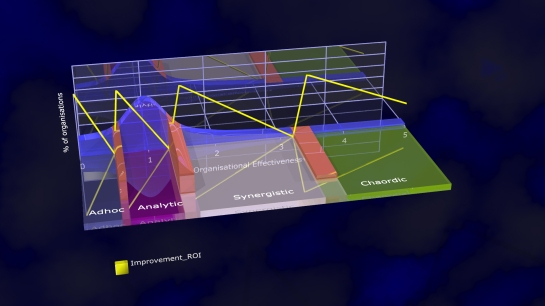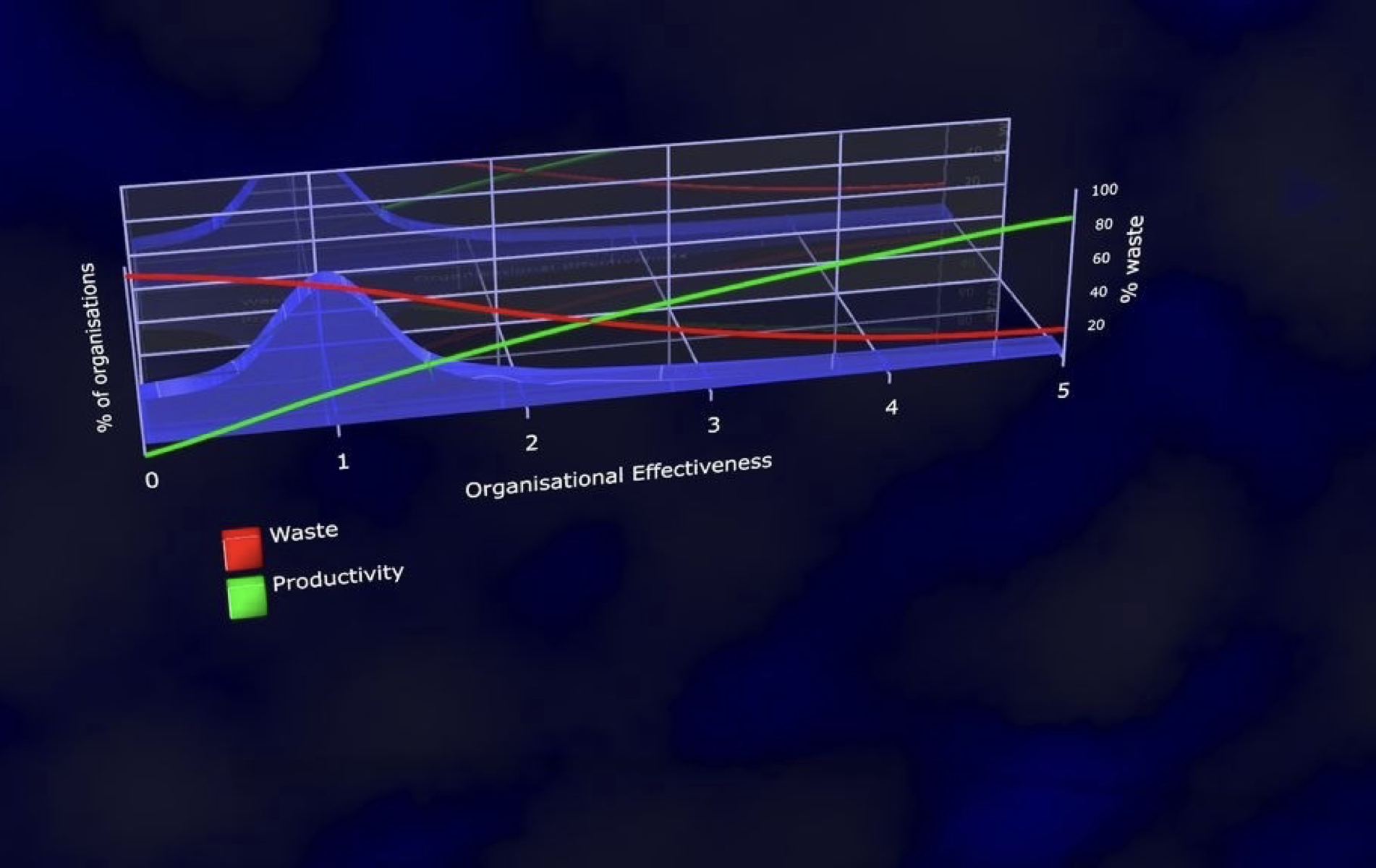The Improvement ROI Sawtooth
[From the Archive: Originally posted at Amplify.com Mar 27, 2011]
Significant Change is NOT Continuous
The Marshall Model postulates that any business on a Rightshifting journey towards greater organisational effectiveness travels through a series of punctuated equilibria.
If you accept this, then an interesting implication follows:
Consider Company X – let’s say to begin with it’s in the Analytic mindset – making improvements to its effectiveness (whether folks in Company X are expressly focused on improving organisational effectiveness, or on other aspects of improvement which happen to have a fortuitously positive side-effect on organisational effectiveness is moot for the purposes of this discussion).
So, let’s assume Company X is rightshifting (making improvements) fast enough to offset the inevitable left-drift (entropy, changing operating environment, etc.) inherent in the running of any real-world business.
It’s All Downhill After a Transition
As Company X approaches the Analytic-to-Synergistic transition zone, we might expect that it begins to experience decreasing ROI on it’s improvement efforts. This is due to a change in the nature of the improvements necessary to continue to Rightshift, e.g. from relatively simple introduction of things like new tools and new ways of working to increasing emphasis on changing assumptions, and on new ways of thinking and being.
(I posit that another factor in the decreasing ROI on Company X’s improvement efforts comes from the increasing cognitive dissonance being experienced by folks up and down the organisation as the company approaches the transition zone).
Crunch Time
Eventually, Company X may reach the point where its ROI on improvement efforts has tailed-off to something approaching zero. Put another way, the company may find itself unable to make any further significant improvements to its effectiveness, regardless of how much time and money it ploughs into its improvement efforts. Upon reaching this position, Company X now has only two sensible options:
- It can give up on rightshifting any further, and settle for its present level of effectiveness.
- It can endeavour to embark on a transition to i.e. the Synergistic mindset.
(Note: Option 1 does not mean an end to Company X’s improvement efforts, as left-drift will continually degrade the company’s effectiveness. Company X will be obliged to continue to deploy some improvement efforts, in order to maintain its present level of effectiveness).
The Rightshifting ROI Sawtooth
Why have I named this the “Rightshifting Sawtooth”? Because, if we plot ROI on improvement efforts for Company X, as it moves along the Rightshifting axis (i.e. horizontally from left to right), the line plotted will resemble a sawtooth pattern, with a minimum just before (to the immediate left of) each transition zone, and a maximum just after (the right of) each transition zone:
As ever, I welcome your comments, observations and questions.
– Bob







